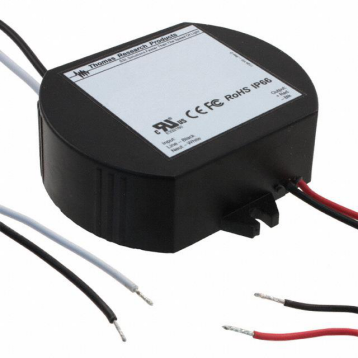How to solve the electromagnetic interference problem of LED drive power?
To solve the electromagnetic interference problem of the LED driving power supply, the following aspects can be started from the hardware:
1. Reduce the interference of the switching power supply itself: Soft switching technology, adding inductance and capacitor components in the original hard switching circuit, using the resonance of the inductor and capacitor to reduce the du/dt and di/dt in the switching process, so that the switching device is turned on. The voltage drop is prior to the rise of the current, or the fall of the current before the turn-off, prior to the rise of the voltage, to eliminate the overlap of voltage and current. The switching frequency modulation technique disperses the energy concentrated on fc and its harmonics 2fc, 3fc... into the frequency bands around them by modulating the switching frequency fc to reduce the EMI amplitude at each frequency point. The choice of components, select components that are not easy to produce noise, difficult to conduct and radiate noise. Of particular note is the selection of winding components such as diodes and transformers. A fast recovery diode with low reverse recovery current and short recovery time is ideal for high-frequency rectification of switching power supplies. Reasonable use of electromagnetic interference filter, one of the main purposes of EMI filter, grid noise is a kind of electromagnetic interference, it belongs to radio frequency interference (RFI), its conducted noise spectrum is roughly 10KHz~30MHz, up to 150MHz. Under normal circumstances, the differential mode interference amplitude is small, the frequency is low, and the interference caused is small; the common mode interference amplitude is large, the frequency is high, and the radiation can be generated by the wire, and the interference caused by the interference is large. The most effective way to reduce conducted interference is to install an electromagnetic interference filter in the switching power supply input and output circuits. LED power supplies generally use a simple single-stage EMI filter, which mainly includes common mode chokes and filter capacitors. The EMI filter effectively suppresses electromagnetic interference from the switching power supply adapter.
2. Reduce the electromagnetic interference problem by cutting off the propagation path of the interference signal: In the first case, the power line interference can be filtered out using the power line filter. A reasonable and effective switching power supply EMI filter should have strong suppression of differential mode and common mode interference on the power line. Improving Electromagnetic Compatibility of PCB Boards Design PCBs are the support for circuit components and devices in LED power systems that provide electrical connections between circuit components and devices. With the rapid development of electronic technology, the density of PCBs is getting higher and higher. The quality of PCB design has a great impact on the electromagnetic compatibility of LED power systems. Practice has confirmed that even if the schematic design of the circuit is correct and the printed circuit board is not properly designed, it will adversely affect the reliability of the LED power system. The PCB anti-interference design mainly includes PCB layout, wiring and grounding, and its purpose is to reduce the electromagnetic interference between the PCB and the crosstalk between the circuits on the PCB. In addition, the frequency of the ac vibration caused by the electromagnetic interference of the general transformer is generally about 50HZ, and the humming sound caused by the improper grounding wiring, because the frequency multiplication frequency of the rectifier circuit is about 100HZ, careful distinction can still be detected. Therefore, when designing a printed circuit board, you should pay attention to the correct method, comply with the general principles of PCB design, and should meet the anti-interference design requirements.
3. Actively greatly enhance the anti-jamming capability of the interfered body: In the LED power system, the input/output is also the transmission line of the interference source, and the source of the receiving RF interference signal. We generally take effective measures when designing: The necessary common mode/differential mode suppression circuit must also take certain filtering and anti-electromagnetic shielding measures to reduce the interference. Wherever possible, various isolation measures (such as opto-isolation or magneto-isolation) are used to block the propagation of interference. Lightning protection measures, outdoor use of the LED power system or the introduction of indoor power lines, signal lines from the outside, to consider the system's lightning protection. Commonly used lightning protection devices are: gas discharge tube, TVS (Transient Voltage Suppression) and the like. The gas discharge tube is a gas breakdown discharge when the voltage of the power source is greater than a certain value, usually tens of V or hundreds of V, and the strong shock pulse on the power line is led into the earth. TVS can be viewed as two parallel and opposite Zener diodes that conduct when the voltage across the terminals is above a certain value. It is characterized by the ability to transiently pass hundreds of thousands of currents.
Summary: The main control technologies for LED power supply EMC/EMI are: circuit measures, EMI filtering, component selection, shielding and anti-interference design of printed circuit boards. If these problems can be solved correctly and reasonably, it is not a problem to pass the 3C certification through the LED driver power supply!


